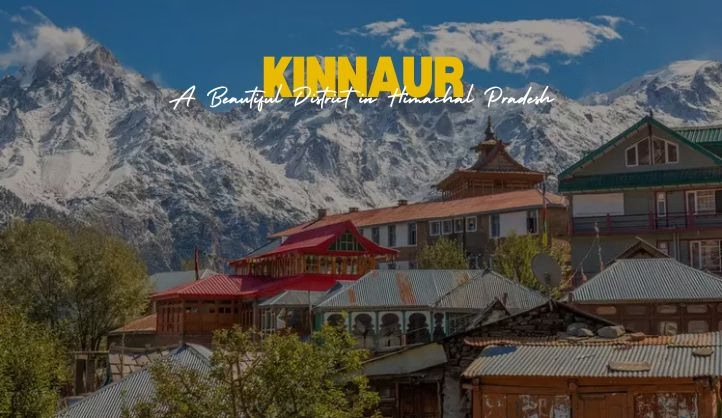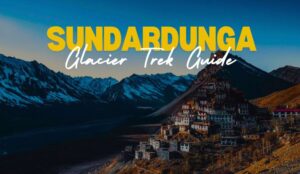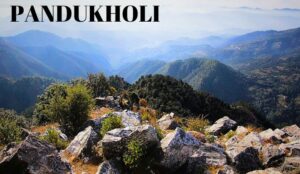Himachal Pradesh, the district of Kinnaur is a treasure trove of natural wonders and cultural heritage. Known for its breathtaking landscapes, this region offers a unique blend of snow-capped peaks, lush valleys, and serene rivers. Its strategic location, bordering Tibet and neighboring districts like Shimla, adds to its historic and geographic significance.
The district spans a vast area of 6,401 km², with altitudes ranging from 1,500 to over 6,000 meters. This diversity creates a varied climate, making it a haven for nature enthusiasts and adventurers alike. Reckong Peo, the administrative headquarters, serves as the gateway to this scenic paradise.
From ancient monasteries to vibrant local festivals, the region is a cultural gem. Whether you’re trekking through high-altitude trails or soaking in the tranquility of its untouched beauty, Kinnaur promises an unforgettable journey. Let’s dive into its natural marvels, rich history, and travel tips to make the most of your visit.
Discovering the Diverse Landscape of Kinnaur
With its dramatic landscapes, the Kinnaur district is a paradise for nature lovers and adventurers. The region is a stunning mix of rugged mountains, lush valleys, and winding rivers. Its unique geography makes it a must-visit destination for anyone seeking natural beauty and cultural richness.
Geographical Marvels – Valleys, Mountains, and Rivers
The district is home to some of the most spectacular geographical features. Towering peaks like Reo Purgyil, the highest in the region, and the sacred Kinner Kailash dominate the skyline. These mountains are not just a treat for the eyes but also hold spiritual significance.
Valleys like Sangla are a visual delight, with their lush greenery and serene ambiance. The Sutlej River and its tributaries flow through the region, adding to its charm. The blend of high-altitude trails and tranquil riverbanks makes it a haven for trekkers and nature enthusiasts.
Exploring Rustic Villages and Remote Areas
Remote villages in the district offer a glimpse into a simpler way of life. Built with stone and wood, these settlements showcase traditional architecture that has stood the test of time. Villages like Kalpa and Spiti are perfect examples of this rustic charm.
Walking through these villages, you’ll find ancient temples and monasteries that reflect the region’s rich cultural heritage. The scenic views from elevated roads and the untouched beauty of these areas make them a photographer’s dream.
The harmonious blend of nature’s raw beauty and human elements creates an unforgettable experience. Whether you’re exploring a valley or a village, the district promises a journey like no other.
Embracing the Cultural Heritage and Local Traditions
The cultural tapestry of this region is woven with ancient temples, vibrant festivals, and rich traditions. Its unique blend of Hindu and Buddhist influences creates a captivating experience for visitors. From sacred sites to lively celebrations, every corner tells a story of history and faith.
Ancient Temples and Buddhist Monasteries
This area is home to some of the most revered religious sites in India. The Kamru Fort, once the capital of the Bushahr rulers, stands as a testament to the region’s historical significance. Inside, the Kamakhya Temple houses a wooden idol of Kamakhya Devi, deeply revered by locals.
Buddhist monasteries also play a central role in the cultural identity of the region. These serene spaces offer a glimpse into the spiritual practices that have shaped the community for centuries. The architectural beauty of these sites, with their intricate carvings and stone structures, adds to their allure.
Festivals, Folklore, and Linguistic Treasures
Festivals here are a vibrant celebration of life and faith. Events like Phagul, Losar, and Dussehra bring communities together with traditional dances, music, and rituals. These gatherings reflect the region’s multi-ethnic and multi-religious fabric.
Folklore and dialects further enrich the cultural landscape. The use of diverse languages, including Kinnauri and Chambyali, preserves the region’s heritage. Traditional attire and artisanal crafts, such as wood carving and embroidery, are also integral to daily life.
| Cultural Element | Description |
| Kamru Fort | Historical fort with Kamakhya Temple, showcasing traditional architecture. |
| Buddhist Monasteries | Spiritual centers with intricate carvings and serene ambiance. |
| Festivals | Phagul, Losar, and Dussehra celebrate local traditions and community bonds. |
| Languages | Kinnauri, Chambyali, and other dialects preserve cultural heritage. |
This region is a cultural mosaic, offering a unique blend of history, spirituality, and community life. Whether exploring ancient temples or participating in local festivals, visitors are sure to leave with a deeper appreciation for its rich heritage.
Kinnaur in Himachal: A Traveler’s Guide
Planning a trip to this stunning region requires careful preparation and local insights. Whether you’re a seasoned traveler or a first-time visitor, understanding the essentials will ensure a smooth and memorable journey. From seasonal tips to road conditions, here’s everything you need to know.
Essential Itineraries and Seasonal Travel Tips
To explore this area effectively, start with a well-planned itinerary. Key spots like Reckong Peo, the administrative hub, and the serene Nako village are must-visits. The best time to visit is between late spring and early autumn when the weather is mild and the landscapes are lush.
Winter brings heavy snowfall, making travel challenging. If you visit during this season, pack warm clothing and check road conditions in advance. Summers are ideal for trekking and sightseeing, with temperatures ranging from 15°C to 25°C.
Road Conditions, Border Crossings, and Local Insights
The primary route to this region is via NH-5/22, which connects Shimla to Reckong Peo. While the roads are well-maintained, the mountainous terrain requires cautious driving. Border crossings near Tibet are restricted, so ensure you have the necessary permits if planning to explore these areas.
Local transport options include HRTC buses, which connect major towns and villages. For a more personalized experience, consider hiring a private vehicle. Accommodation ranges from traditional housestays to modern hotels, catering to all budgets.
Interacting with locals is a highlight of any trip. Learning a few phrases in the local language can go a long way in enhancing your experience. Respect cultural customs, especially when visiting sacred sites like Kailash temples.
Finally, don’t miss the chance to savor local cuisine. From apple-based dishes to traditional Kinnauri meals, the flavors are as diverse as the landscape. With these tips, your journey through this breathtaking region will be both safe and enriching.
Scenic Views and Iconic Destinations in the Region
From towering peaks to serene lakes, this area offers unforgettable vistas. Each destination tells a story of natural beauty and historic charm, making it a must-visit for travelers.
Must-Visit Spots: Kalpa, Sangla, and Reckong Peo
Kalpa is a scenic village known for its stunning views of the Kinner Kailash range. The crisp mountain air and sprawling apple orchards add to its allure. It’s a perfect spot for those seeking tranquility and breathtaking landscapes.
Sangla Valley is another gem, with its lush greenery and the majestic Baspa River flowing through. The valley is dotted with historical landmarks and offers a serene escape for nature lovers.
Reckong Peo, the administrative hub, serves as the gateway to this scenic paradise. It connects travelers to the region’s beauty and heritage, making it a central point for exploration.
Himalayan Peaks, Nako Lake, and Hidden Forts
The towering Himalayan peaks dominate the skyline, offering awe-inspiring views. These mountains are not just a treat for the eyes but also hold spiritual significance, especially the sacred Kinner Kailash.
Nako Lake is a pristine body of water that transforms into an ice skating arena in winter. Surrounded by lush greenery, it’s an idyllic getaway for those seeking peace and recreation.
Hidden forts like the one in Moorang narrate the region’s historical defense and architectural ingenuity. These structures offer a glimpse into the past and add to the area’s mystique.
Lesser-known villages like Nichar provide a glimpse of traditional mountain living. Their untouched beauty and simplicity make them a photographer’s dream. Together, these destinations create a rich tapestry of natural beauty, culture, and adventure.
Adventure and Outdoor Activities to Experience
For thrill-seekers and nature enthusiasts, this region offers an unmatched blend of adventure and serenity. From high-altitude treks to adrenaline-pumping river rafting, there’s something for everyone. The rugged terrain and pristine landscapes make it a haven for outdoor activities.
Trekking, Mountain Biking, and River Rafting
Trekking here is a dream come true for adventurers. The trails wind through the Himalayan range, offering breathtaking views of snow-capped peaks and lush valleys. Popular routes include the Kinner Kailash trek, which takes you to an altitude of 6,050 meters. For a shorter yet equally rewarding experience, explore the trails around Sangla Valley.
Mountain biking is another thrilling way to explore the region. The winding roads and challenging terrains provide an exhilarating ride. Areas like Hangrang are perfect for biking enthusiasts, with trails that offer both scenic beauty and a test of endurance.
River rafting on the Sutlej and its tributaries is a must-try. The rapids range from moderate to challenging, making it suitable for both beginners and experienced rafters. The best time for rafting is between April and June when the water levels are ideal.
Exploring Apple Orchards, Apricot Trails, and Local Farms
Beyond adventure sports, the region is also known for its rich agricultural heritage. A visit to the apple orchards in Kalpa is a treat for the senses. The crisp mountain air and sprawling orchards create a serene atmosphere. Don’t miss the apricot trails, where you can witness the traditional methods of fruit cultivation.
Local farms offer a glimpse into the daily lives of the villagers. Engage in agro-tourism activities like fruit picking or simply enjoy the rustic charm of these farms. The Tibetan influence is evident in the architecture and lifestyle, adding a unique cultural dimension to your visit.
Here are some practical tips to make the most of your adventure:
- Best Time to Visit: April to November for trekking and rafting; May to October for biking.
- Safety Measures: Always carry a first-aid kit, stay hydrated, and follow local guidelines.
- Recommended Gear: Sturdy hiking boots, waterproof jackets, and a reliable map or GPS device.
Whether you’re scaling a peak, biking through rugged trails, or exploring lush orchards, this region promises an unforgettable adventure. Combine your outdoor pursuits with cultural exploration to create a truly enriching experience.
Parting Thoughts on Your Kinnaur Journey
Your journey through this enchanting region leaves a lasting impression, blending adventure, culture, and natural beauty. From the serene Nako Lake to the rugged charm of Kaza, every moment is a testament to the region’s diversity. The towering Himalaya peaks and ancient forts add depth to this unforgettable experience.
The fertile valleys, rich with apple orchards and apricot trails, showcase the region’s agricultural bounty. Navigating through varying levels of terrain, from flat village roads to challenging mountain passes, offers a unique perspective on local life. Places like Pooh reveal a simpler, rustic charm that’s hard to forget.
This journey is more than just a trip; it’s an invitation to connect with a land where ancient traditions meet modern exploration. Whether you’re marveling at the landscapes or immersing yourself in local culture, the memories will inspire you to return and discover even more.
FAQ About Kinnaur
What are the must-visit destinations in Kinnaur?
Kalpa, Sangla, and Reckong Peo are iconic spots offering breathtaking views of the Himalayas, lush valleys, and serene monasteries.
What makes Kinnaur unique in terms of culture?
The region is a blend of ancient temples, Buddhist monasteries, and vibrant festivals, reflecting its rich heritage and Tibetan influences.
What outdoor activities can I enjoy in Kinnaur?
Adventure enthusiasts can indulge in trekking, mountain biking, river rafting, and exploring apple orchards and apricot trails.
How is the road connectivity in Kinnaur?
Roads are well-maintained but winding, offering stunning views. Border crossings like Pooh provide access to remote areas.
What is the best time to visit Kinnaur?
The ideal time is from April to October, with pleasant weather and clear skies, perfect for sightseeing and outdoor activities.
Are there any hidden gems in Kinnaur?
Yes, Nako Lake, Moorang Fort, and the lesser-known Hangrang Valley are hidden treasures worth exploring.
What languages are spoken in Kinnaur?
The primary language is Kinnauri, but Hindi and Tibetan are also widely spoken due to cultural diversity.
Can I visit monasteries in Kinnaur?
Absolutely! Monasteries like Key Gompa and Nako Monastery offer a glimpse into the region’s spiritual and artistic traditions.





